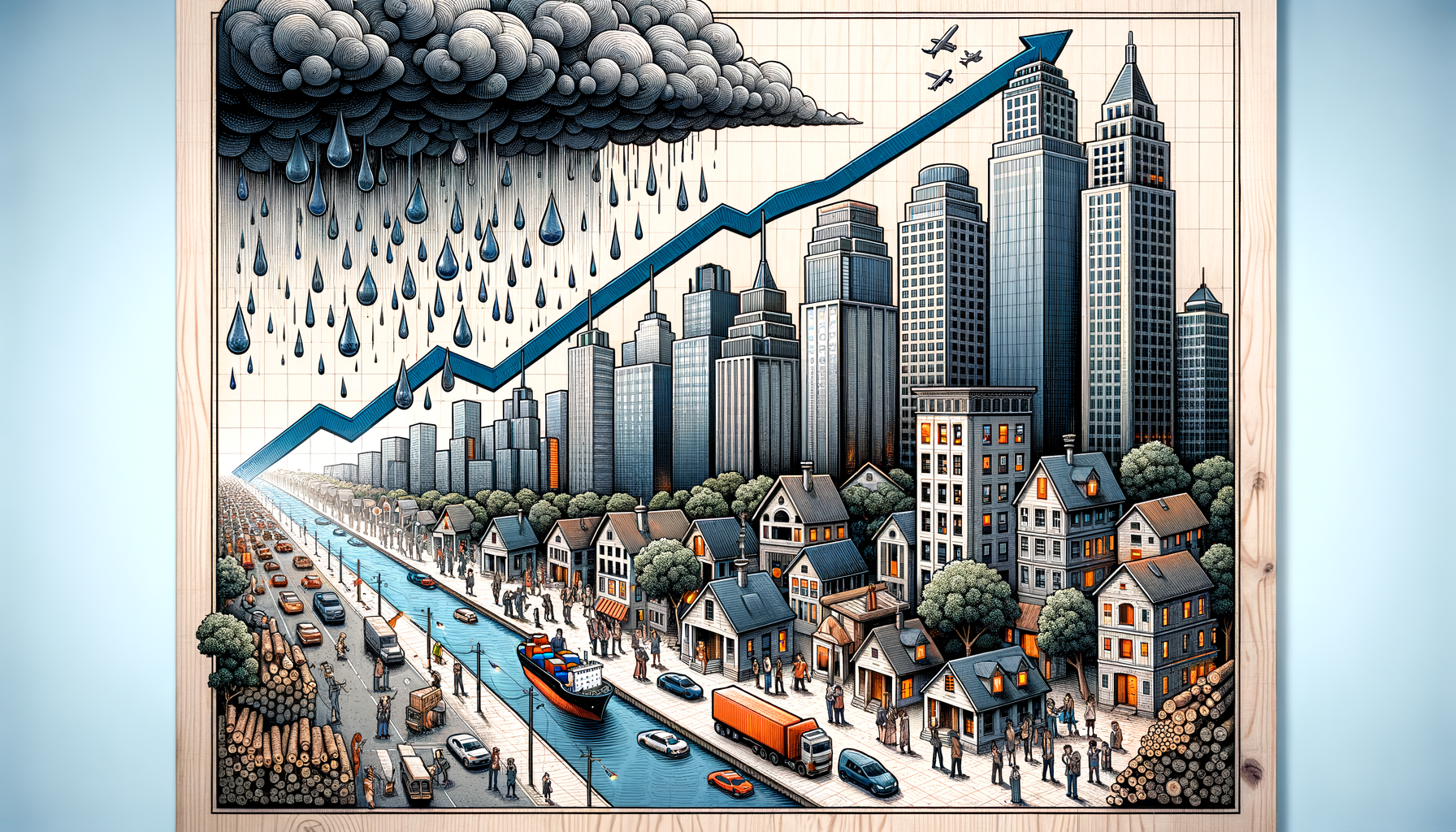“An Insight into the 9.0% Decline in Housing Starts in 2023: Analyzing the Impact and Reasons”

The recent narrative for the U.S. housing sector has taken an unexpected downturn. Housing construction, known as housing starts, underwent a significant 9.0% decline in 2023, marking a noticeable shift in the housing market’s curves and hills. This percentage equates to a substantial dip compared to the housing construction boom witnessed in the previous years. But what does this mean for the average American homebuyer or investor? Let’s dive in.
Understanding Housing Starts
To grasp the full extent of this decline, it’s crucial to understand what ‘housing starts’ really entails. The term refers to the number of new residential construction projects that have commenced over a specific period. This figure helps gauge the vitality of the housing market and is instrumental in the economy at large. That’s why a drop, particularly as significant as 9.0%, reverberates through the entire sector.
The Swings and Roundabouts of the Housing Market
The housing market is known to have its ebbs and flows. What seems to be an ever-rising climb can suddenly face a downward spiral – much like what happened in 2023. While one period may harbor record-breaking numbers and robust growth, the next might see a sudden contraction. The 9.0% dip can be seen as one such downturn that has interrupted the steady uptick over the recent years.
As our analysis shows, housing starts fell by 9.0% in 2023, a startling figure given the consistent uptick in housing starts in previous years. There are several potential reasons for such a dramatic decrease, each with its own thread in the intricate tapestry of the housing market.
Economic Factor and Lending Rates
One factor to consider when examining the decrease is the economic climate in 2023. The U.S. economy has been under duress, with trade tensions, a volatile stock market, and fluctuating employment rattling the country’s financial backbone. Economic uncertainty often brings with it a decrease in homebuyer confidence, leading to sluggish starts.
In addition to economic conditions, lending rates also play an active role in influencing housing starts. The year 2023 saw rising interest rates, which typically deter prospective homeowners from entering the market, thus contributing to the decline in housing starts.
Pandemic-based Impediments
The continued effect of the COVID-19 pandemic cannot be ignored. Supply chain disruptions have put the construction sector in a chokehold, leading to escalating costs for building materials. Lumber prices have been particularly soaring, making it cost-prohibitive for many builders to start new housing projects.
Even the human power behind these housing starts was strained due to the pandemic. The labor market experienced turbulence with many workers continuing to face health and safety uncertainties, subsequently driving a shortage of manpower in the construction industry.
Ripple Effect on The Housing Market
Now, one might wonder: How does the slowdown in housing starts impact other areas of the housing market?
Given housing starts are a strong predictor of future real estate supply, their drop would mean fewer completed homes in the market. This lack of supply can easily push up home prices, making it more difficult for buyers to enter the market, especially first-time buyers.
Moreover, fewer housing starts can deter real estate investors who often rely on new constructions for their investment strategy. A constrained supply may significantly limit the accessibility to potential investment properties.
Lastly, reduced housing starts means decreased construction-related employment. Fewer construction projects can induce job losses, affecting livelihoods and further contributing to the economic turbulence.
Looking Ahead
Despite the gloom that this sudden dip may cast, it’s essential to remember that market fluctuations are quite common. Market rebound and recovery is a historic trend.
There are also external influences that may balance out the slowdown in housing starts. One such factor is the government’s commitment to solving the housing crisis, evident in the regular rollout of support measures.
Moreover, while housing starts have slackened, it doesn’t necessarily mean a total standstill in the housing market. Real estate adaptations such as refurbishments, conversions and renovations have seen a noticeable increase, compensating for the lack of new constructions.
Another bright spark in this slightly dim horizon is the rental market. Despite the slump in housing construction, the rental market continues to thrive. This is in part due to high house prices driving more people to opt for rental housing.
In Conclusion
It’s undeniable that the 9.0% drop in housing starts in 2023 dealt a hefty blow to the housing market. It highlights the delicate balance that the housing market needs to maintain to foster growth and prosperity.
As we move forward, it is up to homebuyers, builders, and investors to closely monitor the market’s responses, adjust expectations, and adapt strategies accordingly. The resilience of the housing industry hinges on this adaptation and the sector’s inherent ability to mold according to changing landscapes.
